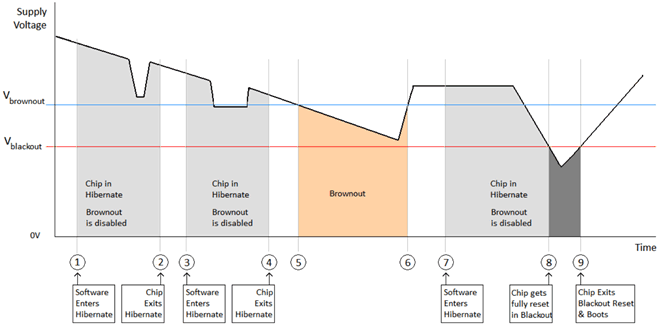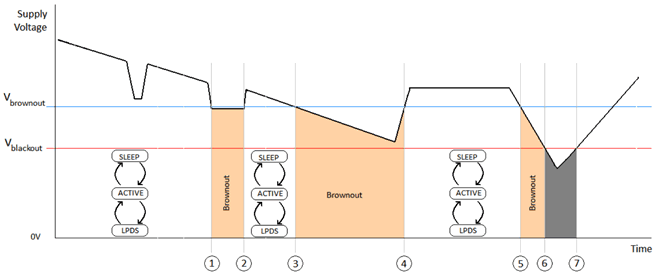SWRS215D April 2019 – May 2021 CC3235S , CC3235SF
PRODUCTION DATA
- 1 Features
- 2 Applications
- 3 Description
- 4 Functional Block Diagrams
- 5 Revision History
- 6 Device Comparison
- 7 Terminal Configuration and Functions
-
8 Specifications
- 8.1 Absolute Maximum Ratings
- 8.2 ESD Ratings
- 8.3 Power-On Hours (POH)
- 8.4 Recommended Operating Conditions
- 8.5 Current Consumption Summary (CC3235S)
- 8.6 Current Consumption Summary (CC3235SF)
- 8.7 TX Power Control for 2.4 GHz Band
- 8.8 TX Power Control for 5 GHz
- 8.9 Brownout and Blackout Conditions
- 8.10 Electrical Characteristics for GPIO Pins
- 8.11 Electrical Characteristics for Pin Internal Pullup and Pulldown
- 8.12 WLAN Receiver Characteristics
- 8.13 WLAN Transmitter Characteristics
- 8.14 WLAN Transmitter Out-of-Band Emissions
- 8.15 BLE/2.4 GHz Radio Coexistence and WLAN Coexistence Requirements
- 8.16 Thermal Resistance Characteristics for RGK Package
- 8.17
Timing and Switching Characteristics
- 8.17.1 Power Supply Sequencing
- 8.17.2 Device Reset
- 8.17.3 Reset Timing
- 8.17.4 Wakeup From HIBERNATE Mode
- 8.17.5 Clock Specifications
- 8.17.6 Peripherals Timing
- 9 Detailed Description
- 10Applications, Implementation, and Layout
- 11Device and Documentation Support
- 12Mechanical, Packaging, and Orderable Information
Package Options
Mechanical Data (Package|Pins)
- RGK|64
Thermal pad, mechanical data (Package|Pins)
- RGK|64
Orderable Information
8.9 Brownout and Blackout Conditions
The device enters a brownout condition when the input voltage drops below Vbrownout (see Figure 8-4 and Figure 8-5). This condition must be considered during design of the power supply routing, especially when operating from a battery. High-current operations, such as a TX packet or any external activity (not necessarily related directly to networking) can cause a drop in the supply voltage, potentially triggering a brownout condition. The resistance includes the internal resistance of the battery, the contact resistance of the battery holder (four contacts for 2× AA batteries), and the wiring and PCB routing resistance.
When the device is in HIBERNATE state, brownout is not detected. Only blackout is in effect during HIBERNATE state.
 Figure 8-4 Brownout and Blackout Levels (1 of 2)
Figure 8-4 Brownout and Blackout Levels (1 of 2)
 Figure 8-5 Brownout and Blackout Levels (2 of 2)
Figure 8-5 Brownout and Blackout Levels (2 of 2)In the brownout condition, all sections of the device (including the 32-kHz RTC) shut down except for the Hibernate module, which remains on. The current in this state can reach approximately 400 µA. The blackout condition is equivalent to a hardware reset event in which all states within the device are lost.
Table 8-5 lists the brownout and blackout voltage levels.
| CONDITION | VOLTAGE LEVEL | UNIT |
|---|---|---|
| Vbrownout | 2.1 | V |
| Vblackout | 1.67 | V |